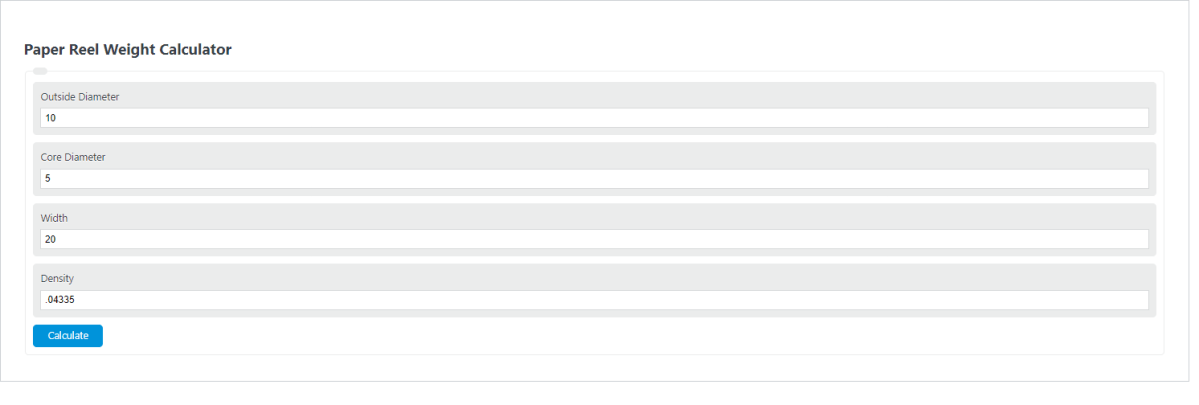Enter the roll diameter, core diameter, width, and density into the calculator to determine the paper reel weight.
Paper Reel Weight Formula
The following equation is used to calculate the Paper Reel Weight.
PRW = (OD^2-ID^2)*W*D
- Where PRW is the paper reel weight (lbs)
- OD is the outer diameter of the roll (in)
- ID is the core diameter (in)
- W is the width of the roll (in)
- D is the density of the paper (lbs/in^3)
- average paper density = .04335 lbs/in^3
What is a Paper Reel Weight?
Definition:
A paper reel weight is defined as the total mass of a roll of paper with a given diameter, core, and width.
How to Calculate Paper Reel Weight?
Example Problem:
The following example outlines the steps and information needed to calculate Paper Reel Weight.
First, determine the outer diameter of the reel. In this example, the outer diameter of the reel is measured to be 10 in.
Next, determine the diameter of the core. This core is measured to be 5 in.
Next, determine the width of the roll. The width, in this example, is measured to be 20 inches.
Next, determine the density of the paper. Average paper has a density of .04335 lbs/in^3.
Finally, calculate the paper reel weight using the formula above:
PRW = (OD^2-ID^2)*W*D
PRW = (10^2-5^2)*20*.04335
PRW = 65.025 lbs
FAQ
What factors affect the weight of a paper reel?
The weight of a paper reel is primarily affected by its outer diameter, core diameter, width, and the density of the paper. Changes in any of these parameters can significantly alter the overall weight of the paper reel.
How can I determine the density of paper for different types?
The density of paper can vary based on its type and thickness. Generally, the average density of paper is around .04335 lbs/in^3, but for more specific types, it’s best to refer to manufacturer specifications or conduct a density test by measuring the weight of a known volume of paper.
Why is it important to calculate the paper reel weight accurately?
Accurately calculating the paper reel weight is crucial for several reasons, including logistics planning, cost estimation, and ensuring the structural integrity of storage and transport systems. It helps in determining the right transportation method, calculating shipping costs, and avoiding overloading that might lead to accidents or damage.
